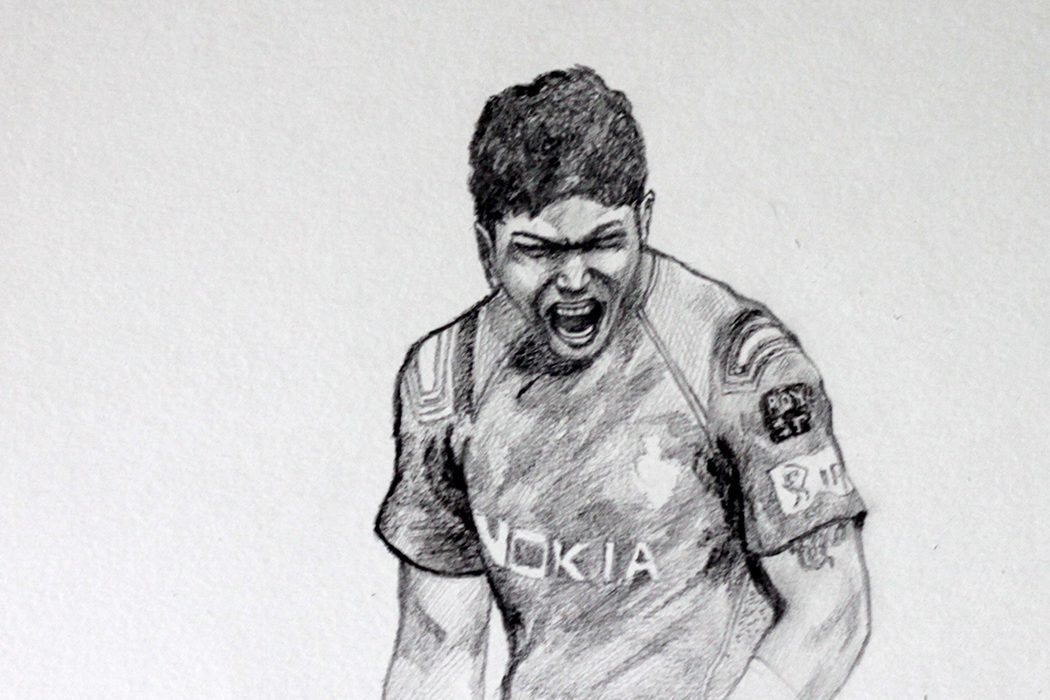Much derided for not being cricket, the IPL serves as a means for social mobility and a big stage to show off one’s talents, says Gautam Bhimani.
Even in the month of February, Rajasthan can get unbearably warm. That day was no exception. The hot afternoon desert sun beat relentlessly down on the crumbling walls of the factory outhouse. Bharat Singh was going about his daily routine, stacking packets of electric wires on to a trolley. He was the kind of person who would rather work a longer shift if there was a large shipment to negotiate than take frequent breaks. Despite being the diligent worker he was, that day was different.
It took something spectacular to change his work pattern, and that day was just that. His work for the day came to a grinding halt when his routine was interrupted by a startling piece of news. His 20-year-old son Nathu had achieved a sporting milestone. He had been selected for an IPL franchise. And no, not just “selected” or snapped up for a steal. It was more than just a sporting achievement. It was a financial windfall. The Mumbai Indians had valued him at a staggering Rs 3.2 crore. He had started with a base price of Rs 10 lakh, already a significant amount for his father, who earned a modest Rs 8,000 a month from factory wages.
The mind-boggling story of Nathu Singh picked up by a franchise owned by India’s wealthiest individual is the ironic truth of the Indian Premier League. In some cases, it was the big bucks garnered even before becoming a big boy, let alone a big star: the unique case of a member of the India squad that finished runners up in the recent Under-19 World Cup, pint-sized dynamo and audacious strokemaker Sarfaraz Khan, who at just 17 was bought for Rs 50 lakh by RCB in 2015. While Nathu wanted to fructify his dream of building a house for his parents, Sarfaraz, whose dad used to take him, his brother Musheer and two kits to cricket coaching on a bike, and was also seriously injured in a bike accident on a separate occasion, immediately got his father a car so he could be safe and comfortable.
It was more than just a sporting achievement. It was a financial windfall. The Mumbai Indians had valued him at a staggering Rs 3.2 crore. He had started with a base price of Rs 10 lakh, already a significant amount for his father, who earned a modest Rs 8,000 a month from factory wages.
Even some prominent names like Saurashtra’s Ravindrasinh Jadeja, while not in total penury, found himself catapulted into a league of wealth and prosperity unimaginable from his surroundings best described as humble and basic. Other names like Azamgarh grocer’s son Iqbal Abdulla or Umesh Yadav, the son of a coal mine worker in Khaparkheda Village (a colliery region near Nagpur), come readily to mind. Even Gujarat Lions and former India captain Suresh Raina, whose father worked at an ordnance factory in Muradnagar, would never have imagined zipping around in a canary yellow Porsche Boxter had it not been for the generous remunerations from the IPL franchises.
These tales are not merely mirrors on the economic extremities of our nation, but also tales of opportunity. Not every story is necessarily a rags to riches tearjerker, but there are hundreds of stories of players from modest backgrounds getting to turn a passion into a profession, which was never the case with someone representing a league club, a district or state, all prestigious but not financially fulfilling.
While there is an obvious financial angle, the real benefit of the IPL is the opportunity, a platform that money can’t buy. It’s the exposure at the highest level, format notwithstanding, that could catapult a player from oblivion to stardom overnight. Many, like Jasprit Bumrah, Hardik Pandya, Mohit Sharma, Murali Vijay, Manpreet Gony, Karn Sharma and Pawan Negi (the most expensive Indian acquisition at IPL 2016 by the Delhi Daredevils at a staggering Rs 8.5 crore) have the Indian Premier League to thank to some extent for donning national colours. Even established stars, out of sorts or out with injury, get to use the IPL as a high profile place to find form and favour. Ashish Nehra, Harbhajan Singh and Yuvraj Singh have all realised that, along with any fattening of the purses, which is never unwelcome, the biggest value of the event was the ability to be seen and to showcase their abilities on the biggest stage, with the biggest stars from around the world to ratify the credibility of their performances and achievements.
These tales are not merely mirrors on the economic extremities of our nation, but also tales of opportunity. Not every story is necessarily a rags to riches tearjerker, but there are hundreds of stories of players from modest backgrounds getting to turn a passion into a profession.
And this applies to the overseas stars as well. On the one hand, the IPL is a great resurrection ground for almost every Caribbean T20 star. Despite their flamboyance, the sport in that part of the world is hardly cash-rich and thanks to the IPL, they not only get a livelihood but also a stage to showcase talents other than cricket, such as DJ “Champion” Bravo getting an outlet into music and cinema.
The best examples though, come from the 2016 champions—Sunrisers Hyderabad. First, the man who won the Rising Star award, Mustafizur “the Fizz” Rahman, could not have hoped for the same riches and recognition, no matter what he did back home in Bangladesh. All rounder Moises Henriques who earned himself a Test spot thanks to the limelight and the victorious captain, who put himself on a leadership pedestal even his country could not have ever offered him.
What some cheekily call the Indian Paisa League, to me, is really the Indian Platform League!


